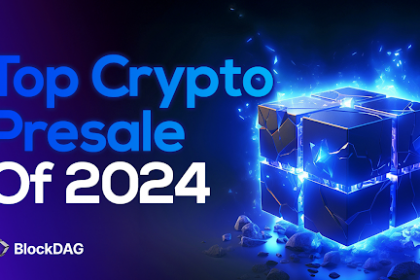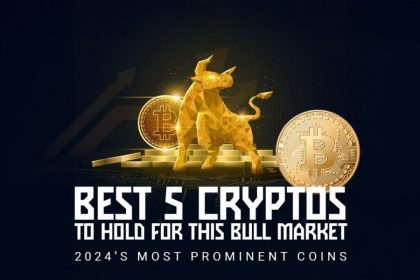The financial world is undergoing a seismic shift, driven by blockchain technology and the rise of tokenized securities. These innovations are democratizing access to investment opportunities once reserved for institutional players or high-net-worth individuals. Today, platforms specializing in tokenized securities are breaking down barriers, enabling retail investors to diversify portfolios with assets like real estate, private equity, and fine art. But what exactly are tokenized securities, and how do these platforms work? Let’s explore this transformative space.
Understanding Tokenized Securities: The Basics
Tokenized securities represent traditional financial assets—such as stocks, bonds, or real estate—converted into digital tokens on a blockchain. Each token acts as a digital certificate of ownership, combining the regulatory compliance of traditional securities with the efficiency of blockchain. For instance, a 10million commercial property can be divided into 10,000 tokens, each worth1,000. This fractional ownership model allows smaller investors to participate in high-value markets.
Moreover, blockchain’s transparency ensures that every transaction is recorded immutably. Smart contracts automate processes like dividend payments or voting rights, reducing administrative costs. As a result, tokenized securities eliminate intermediaries, streamline operations, and enhance trust.
The Rise of Tokenized Securities Platforms
Over the past decade, specialized platforms have emerged to facilitate the issuance, trading, and management of tokenized securities. These platforms act as bridges between traditional finance and decentralized ecosystems. Below, we delve into their core functions:
Democratizing Access to Illiquid Assets
Historically, assets like venture capital funds or infrastructure projects required large minimum investments and long lock-up periods. Tokenization changes this. Platforms such as Securitize and Polymath enable fractional ownership, letting investors buy tokens representing slices of these assets. Consequently, a teacher in Tokyo can now invest in a Silicon Valley startup, while a retiree in Brazil can own a piece of a New York skyscraper.
Enhancing Liquidity in Traditional Markets
Traditional markets often suffer from liquidity shortages, especially for private equities or real estate. Tokenized securities platforms address this by enabling 24/7 trading on secondary markets. For example, tZERO offers a regulated exchange where security tokens trade like cryptocurrencies. This constant availability attracts global investors, boosting market activity.
Ensuring Regulatory Compliance
Reputable platforms prioritize compliance with local securities laws. They embed Know Your Customer (KYC) and Anti-Money Laundering (AML) checks into onboarding processes. Additionally, smart contracts can restrict token transfers to verified investors, ensuring adherence to jurisdictional regulations.
Leading Platforms Pioneering the Tokenization Movement
Several platforms stand out in this rapidly evolving sector. Here’s a closer look at three key players:
Polymath: Simplifying Security Token Creation
Polymath offers a user-friendly interface for issuers to tokenize assets. Its blockchain-based platform automates legal compliance, integrating tools for investor accreditation and regulatory requirements. Furthermore, Polymath’s partnerships with legal firms streamline the issuance process, making it a go-to for enterprises exploring tokenization.
Securitize: A Full-Cycle Solution
Securitize provides end-to-end services, from token creation to secondary trading. Its proprietary protocol, DS Protocol, manages dividends, buybacks, and investor communications. Notably, Securitize has partnered with major blockchain networks like Algorand and Avalanche, enhancing scalability and cross-chain interoperability.
tZERO: Revolutionizing Secondary Markets
Backed by Overstock.com, tZERO operates a regulated alternative trading system (ATS) for security tokens. Investors trade tokenized stocks, bonds, and real estate with minimal fees. The platform’s integration with blockchain ensures near-instant settlement, a stark contrast to traditional markets’ T+2 timelines.
Challenges Facing Tokenized Securities Platforms
Despite their potential, these platforms face hurdles that could slow adoption.
Regulatory Uncertainty
Global regulators are still grappling with how to classify and oversee tokenized securities. For example, the SEC in the U.S. treats most security tokens as traditional securities, subjecting them to existing laws. However, inconsistent regulations across countries create complexity for cross-border platforms.
Market Fragmentation
The lack of standardized protocols across platforms leads to fragmentation. Tokens issued on one blockchain may not be compatible with another, limiting liquidity. Initiatives like the Security Token Standards (STS) aim to unify practices, but widespread adoption remains elusive.
Investor Education
Many potential users remain wary of blockchain-based assets due to misconceptions about volatility and security. Platforms must invest in educational campaigns to highlight distinctions between utility tokens (e.g., cryptocurrencies) and regulated security tokens.
The Prospect of Tokenized Securities: Trends to Watch
As the sector matures, several trends promise to shape its trajectory:
Institutional Adoption Accelerates
Major financial institutions, including BlackRock and J.P. Morgan, are exploring tokenization. Their entry will lend credibility, attract capital, and spur innovation. For instance, J.P. Morgan’s Onyx blockchain already settles tokenized collateral for institutional clients.
Integration with DeFi
Decentralized finance (DeFi) platforms could merge with tokenized securities ecosystems. Imagine using tokenized real estate as collateral for a loan on Aave or earning yield through staking. Such synergies would unlock unprecedented financial flexibility.
AI-Driven Compliance Tools
Artificial intelligence is poised to revolutionize regulatory compliance. Platforms may deploy AI to monitor transactions in real-time, flag suspicious activity, and adapt to changing laws across jurisdictions.
Conclusion
Tokenized securities platforms are not just a niche innovation—they represent a fundamental reimagining of global finance. By lowering barriers to entry, enhancing liquidity, and ensuring transparency, these platforms empower individuals to diversify their portfolios like never before. While challenges remain, the convergence of regulatory progress, institutional interest, and technological advancements signals a bright future.







